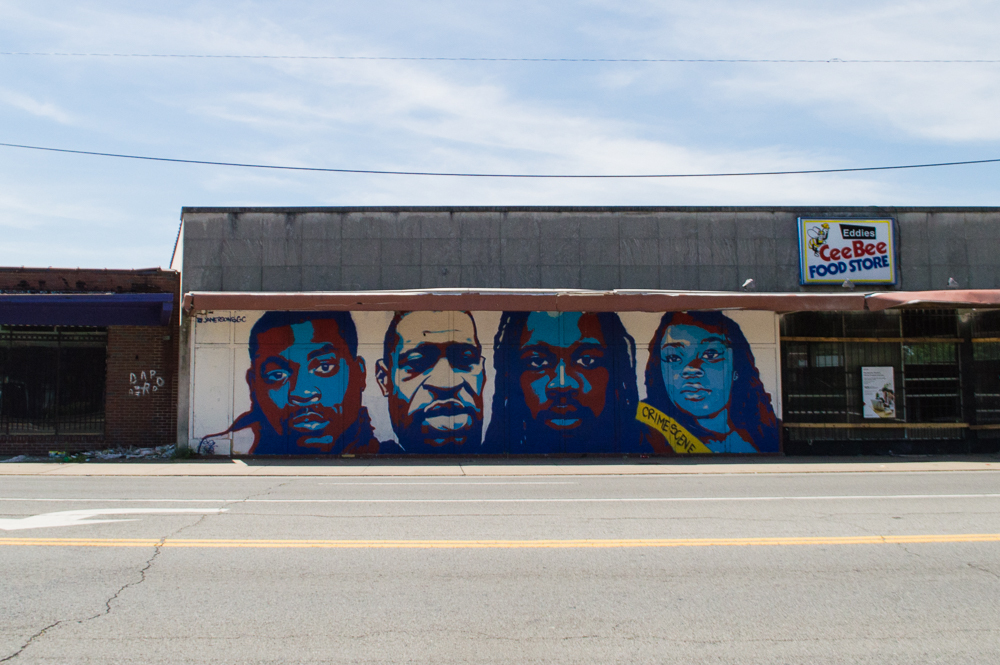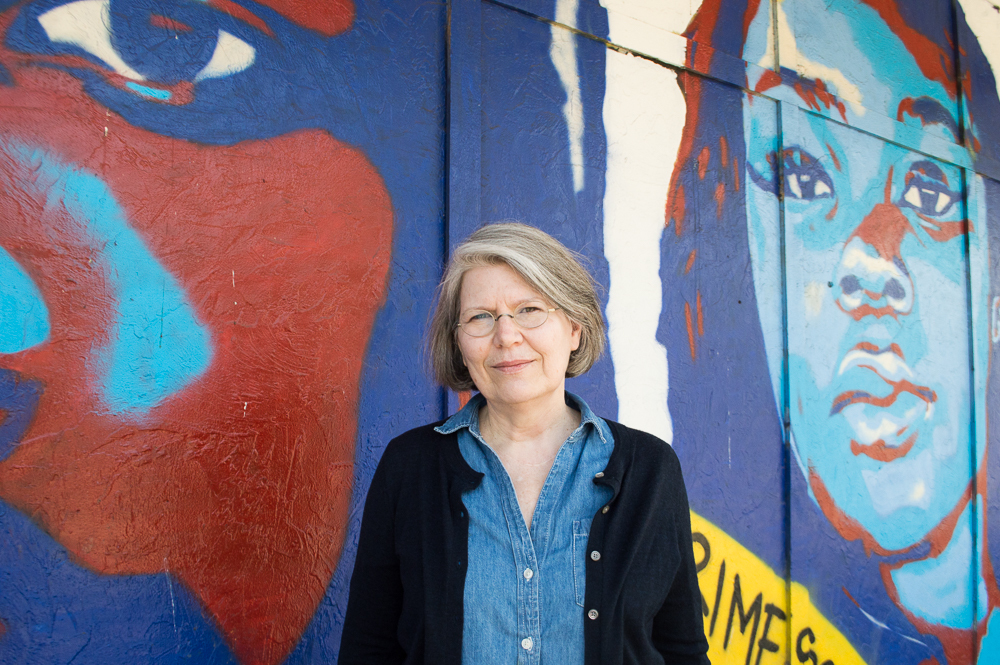
Portraits of four people killed by police loom larger than life on Lafayette Street just south of downtown Nashville. But new occupants faced a choice: keep the mural in place and alter their renovation plans, or remove it and risk alienating the community.
The portraits first went up shortly after police killed George Floyd and Breonna Taylor. Nashville artist Charles Key walked up to the boarded up windows of the vacant Cee Bee Food store and started to paint.
“This was my form of protest in a certain way,” he says. “I did the pictures in red, white and blue colors to really just say this is America, we are part of America.”
The portraits are close-ups more than 6 feet tall, and their solemn eyes stare out over the street. The faces of Floyd and Taylor are recognizable around the world. And they’re alongside two young Black men killed by police here in Nashville — Jocques Clemmons and Daniel Hambrick.
“I really wanted to reflect and show the injustice here, in your own backyard,” Key says.
This mural in particular is special to him, but Key knew better than to get attached to it.
“New owners could come, buildings get torn down,” he says. “We always have that notion that this is basically temporary. If you asked anyone they’d say, ‘Enjoy it while you have it.’ ”
Key thought it might be the end for the mural when he drove past and noticed construction on the building.
That was the same worry Jay W had. He lives nearby on Lewis Street.
“Although this may be important to the community,” he says, “it might not be as important to the person that’s moving into the community.”
 Paige Pfleger WPLN News
Paige Pfleger WPLN NewsPortraits of Jocques Clemmons, George Floyd, Daniel Hambrick, and Breonna Taylor by artist Charles Key.
Project Return is moving in. It’s a Nashville based re-entry program that helps connect hundreds of formerly incarcerated people to jobs every year.
CEO Bettie Kirkland says once they leased the building, they planned to take the mural down and relocate it to a nearby church. The former grocery store hardly has any windows, and the mural covers up a large swath.
“On the brink of dismantling the mural and relocating it on another street, we backed out of that decision,” Kirkland says.
She told the designers to find a new way to let light in. But the decision wasn’t as simple as that — it also had to do with the message these portraits send.
“Personally, I think they create a demand for change,” she says. “And we line up with that. We don’t want people to experience violence at the hands of police. We don’t want to see Black Nashvillians disproportionately swept into prison.”
 Paige Pfleger WPLN News
Paige Pfleger WPLN NewsBettie Kirkland is the CEO of the re-entry program Project Return.
It seems Project Return has made a good first impression by keeping the mural. But now it’s all about the long game.
Jay W points out J.C. Napier Homes right across the street. Project Return occupies what was once a convenient grocery store for everyone — but now it will hold a program that will mostly serve a specific group of people.
With the watchful eyes of the mural as his backdrop, he pulls Kirkland aside to say so.
“What happens here needs to be able to serve the whole community,” he says, “and not just selected members of the community.”
Kirkland nods, and says her nonprofit has been visiting Napier to cater suppers and build relationships and trust.
She says that while moving in Project Return is trying to be respectful of what was here before them. That includes the mural, and their new neighbors.
Correction: This story originally misstated Project Return’s ownership role for their new office space. The nonprofit is leasing the building.

